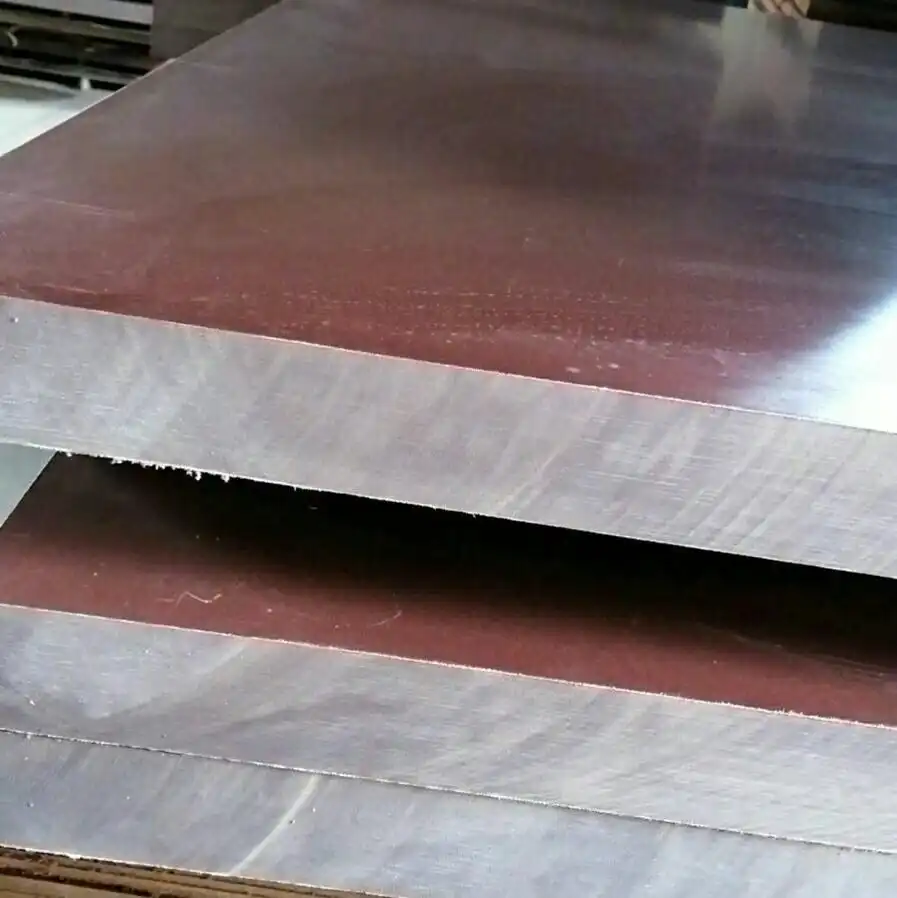Composition and Structure of Phenolic Cotton Sheets
Raw Materials and Manufacturing Process
Phenolic cotton sheets are produced using a carefully controlled manufacturing process that combines phenolic resin with layers of cotton fabric. The phenolic resin, derived from phenol and formaldehyde, is impregnated into the cotton fabric through a series of steps. This process involves applying the resin to the fabric, partially curing it, and then stacking multiple layers to achieve the desired thickness. The layered material is then subjected to heat and pressure in a hydraulic press, which fully cures the resin and creates a dense, uniform sheet with excellent mechanical and chemical properties.
Chemical Structure of Phenolic Resin
The chemical resistance of phenolic cotton sheets, also known as phenolic cotton cloth board, is primarily attributed to the unique structure of the phenolic resin. Phenolic resins are thermosetting polymers characterized by a highly cross-linked network of phenol and formaldehyde molecules. This cross-linked structure forms a three-dimensional matrix that provides exceptional stability and resistance to chemical attack. The presence of aromatic rings in the phenol molecules further enhances the material's ability to withstand aggressive chemical environments, making phenolic cotton sheets an ideal choice for applications where chemical resistance is paramount.
Role of Cotton Fabric Reinforcement
While the phenolic resin provides the primary chemical resistance, the cotton fabric reinforcement plays a crucial role in enhancing the overall performance of the sheet. The cotton fibers act as a reinforcing agent, improving the mechanical strength, dimensional stability, and impact resistance of the composite material. Additionally, the cotton fabric helps distribute stress throughout the sheet, preventing localized failures and improving the overall durability of the product. This synergistic combination of phenolic resin and cotton fabric results in a material that not only resists chemical attack but also maintains its structural integrity under various environmental conditions.
Chemical Resistance Properties of Phenolic Cotton Sheets
Resistance to Acids and Bases
One of the most notable features of phenolic cotton sheets is their excellent resistance to both acids and bases. The cross-linked structure of the phenolic resin creates a protective barrier that prevents the penetration of corrosive substances into the material. This resistance extends to a wide range of acids, including sulfuric acid, hydrochloric acid, and nitric acid, as well as strong bases like sodium hydroxide and potassium hydroxide. The ability to withstand these aggressive chemicals makes phenolic cotton sheets invaluable in industries such as chemical processing, wastewater treatment, and laboratory equipment manufacturing.
Solvent Resistance
Phenolic cotton sheets exhibit remarkable resistance to a variety of organic solvents, including alcohols, ketones, and hydrocarbons. This property is particularly beneficial in applications where exposure to solvents is common, such as in paint booths, chemical storage facilities, and automotive manufacturing. The solvent resistance of phenolic cotton sheets is attributed to the tight molecular structure of the cured phenolic resin, which prevents the ingress of solvent molecules and maintains the material's integrity even under prolonged exposure.
Performance in Harsh Chemical Environments
The chemical resistance of phenolic cotton sheets extends beyond individual substances to encompass performance in complex chemical environments. These materials can withstand exposure to multiple chemicals simultaneously, making them suitable for use in diverse industrial settings. For instance, phenolic cotton sheets are commonly used in chemical processing equipment, where they may encounter a mixture of acids, bases, and solvents during operation. The ability to maintain their properties in such harsh conditions underscores the versatility and reliability of phenolic cotton sheets as a material of choice for demanding chemical applications.
Applications and Benefits of Chemical-Resistant Phenolic Cotton Sheets
Industrial Applications
The exceptional chemical resistance of phenolic cotton sheets, also known as phenolic cotton cloth board, has led to their widespread adoption in various industrial applications. In the chemical processing industry, these materials are used to fabricate tank linings, pump components, and valve seats that come into direct contact with corrosive substances. The aerospace sector utilizes phenolic cotton sheets in the construction of aircraft interiors and cargo holds, where resistance to hydraulic fluids and other chemicals is essential. Additionally, the automotive industry employs these materials in the manufacture of gaskets, seals, and under-hood components that must withstand exposure to oils, fuels, and other automotive fluids.
Laboratory and Research Settings
Phenolic cotton sheets find extensive use in laboratory and research environments due to their chemical resistance and durability. They are commonly used to construct laboratory bench tops, fume hood liners, and storage cabinets for hazardous chemicals. The material's ability to resist a wide range of chemicals ensures the safety and longevity of laboratory equipment, while its smooth, non-porous surface facilitates easy cleaning and decontamination. Researchers and scientists rely on the chemical resistance of phenolic cotton sheets to maintain the integrity of their experiments and protect sensitive instruments from chemical damage.
Cost-Effectiveness and Longevity
The chemical resistance of phenolic cotton sheets translates into significant cost savings and improved longevity for end-users. By resisting degradation from chemical exposure, these materials maintain their structural integrity and performance characteristics over extended periods, reducing the need for frequent replacements. This longevity is particularly valuable in industrial settings, where equipment downtime for maintenance or replacement can be costly. Furthermore, the versatility of phenolic cotton sheets allows for their use in multiple applications, potentially reducing the need for specialized materials and simplifying inventory management. The combination of durability, chemical resistance, and cost-effectiveness makes phenolic cotton sheets an attractive option for businesses seeking reliable, long-lasting materials for their chemical-intensive operations.
Conclusion
The chemical resistance of phenolic cotton sheets is a testament to the innovative combination of phenolic resin and cotton fabric reinforcement. This unique composite material offers exceptional protection against a wide array of chemicals, including acids, bases, and solvents, making it an indispensable component in numerous industrial and scientific applications. The durability, versatility, and cost-effectiveness of phenolic cotton sheets have solidified their position as a preferred material for environments where chemical resistance is paramount. As industries continue to evolve and face new chemical challenges, the reliability and performance of phenolic cotton sheets will undoubtedly play a crucial role in advancing technological progress and ensuring operational safety.
Contact Us
For more information about our high-quality phenolic cotton sheets and their chemical resistance properties, please don't hesitate to contact us at info@jhd-material.com. Our team of experts is ready to assist you in finding the perfect solution for your chemical-resistant material needs.






